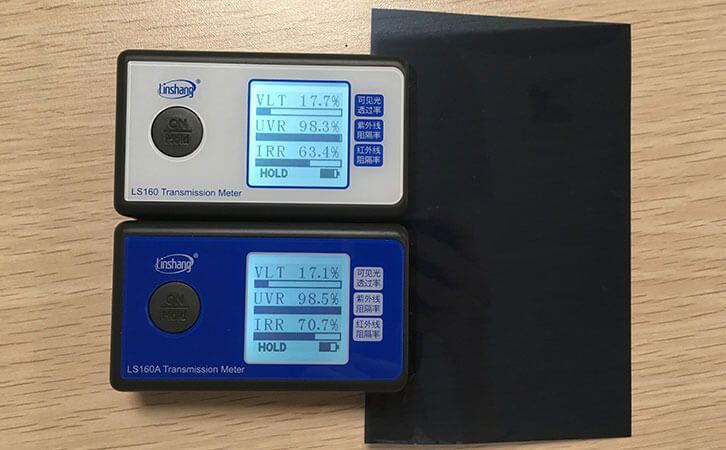Comparison between LS160 and LS160A Laser Labs Tint Meter
The Linshang LS160 and LS160A laser labs tint meter are easy to carry and the testing data is also very accurate. Since its launch, the customers give very good feedbacks. But occasionally some customers will come to us to ask us, the two instruments are almost the same, the function is similar, where is the difference?
I. The parameter difference between LS160 and LS160A laser labs tint meters
The visible light and ultraviolet bands of the LS160 and LS160A laser labs tint meters are the same. Only the infrared band is different. The LS160 laser labs tint meter tests the infrared rejection of 950 nm, while the LS160A tests the infrared rejection of 1400 nm. Different bands tested will result in different data for both meters when testing the same film. As shown in the figure below, the LS160 and LS160A laser labs tint meter have the same visible light transmittance and UV rejection rate data when testing the same film, but the infrared rejection rate is 11%.
II. The application difference between LS160 and LS160A laser labs tint meters
Based on experience and feedback from customers, most of the metal films that are insulated by reflection will perform better at 1400 nm, while those that insulate heat by absorbing heat will perform better at 950 nm. Therefore, Linshang technology recommend that customers choose the appropriate instrument according to the type of film they need to measure.
| Model | Ultraviolet | Visible light | Infared Rays | Application |
| LS160 | 365nm | 530nm | 940nm | Heat-absorbing film |
| LS160A | 365nm | 530nm | 1400nm | Metallic film and ceramic film |
In addition to measuring window film, if you also need to measure the stick-film glass or directly measure the thermal insulation and UV blocking effect of car windows tint. Please use Linshang window tint meter.
- Choosing the Right Window Tinting Film
- Measuring the Transmittance of a Hemisphere by Plastic Transmittance Meter
- Window Tint Meter | Pros and Selection Methods of Architectural Membrane
- Solar Power Lightens Up with Thin-Film Technology
- Sunglass Guide and terminology
- What is the Solar Heat Gain Coefficient Ratings (SHGC)
